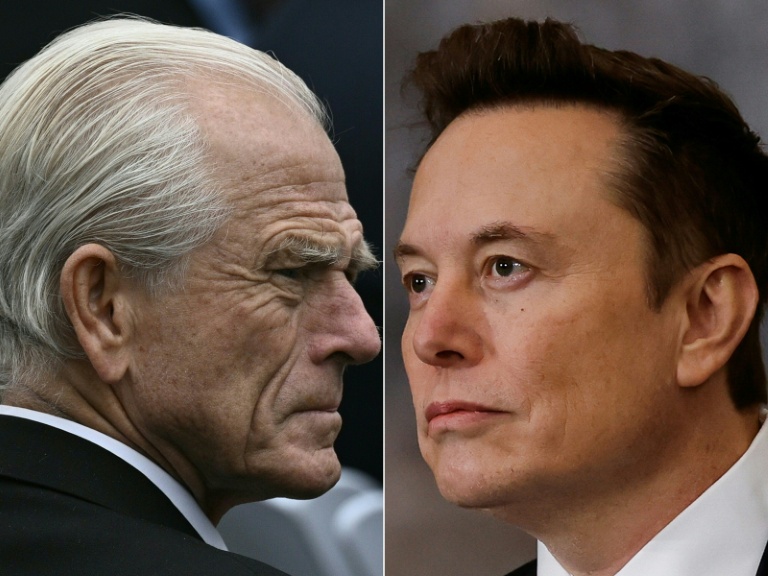[SINGAPORE] The dramatic turnaround in US President Donald Trump’s stance on his reciprocal tariffs – he paused steep individualised tariffs on dozens of trading partners for 90 days – is likely to trigger a reversal of another sort in the ocean shipping industry.
Although the suspension is welcome, the dynamic situation could remain challenging for many shippers.
Meanwhile, the peak season for shipping to the United States is expected to kick off early as a result of businesses front-loading their shipments.
She added that Maersk’s customers have been asking about the flexibility to speed up or slow down shipments, and to potentially redirect goods to alternative markets.
BT in your inbox
Start and end each day with the latest news stories and analyses delivered straight to your inbox.
“This includes offerings such as bonded storage and delayed transits, as well (as) re-labelling of already-dispatched goods sitting in warehouses. With some customers, we also continue exploring opportunities to flip the flow of goods to alternate regions and markets by leveraging our East-West network, shuttle services and key terminal hubs,” she said.
A bonded storage is a facility where shippers store their imported goods without needing to immediately pay import taxes and duties because the cargoes are considered to be still in transit to their final destination.
It enables a business to manage inventory in a more strategic and cost-effective way, in that it can ship the freight to a desired market at an appropriate time.
The Danish firm’s hub ports on its East-West network include those in the Netherlands, Germany, Spain, Morocco, Egypt, Oman and Malaysia.
Tan Hua Joo, a box shipping analyst at data provider Linerlytica, said shippers from countries other than China, such as Vietnam and India, will gradually reinstate bookings they scrapped right after the Apr 2 announcement.
He expects that bookings from China will remain depressed.
Steep duties
The reciprocal tariffs Trump unveiled on Apr 2 ranged from the baseline rate of 10 per cent to individualised rates of as high as 49 per cent.
The world’s factory, China, was slapped with an initial reciprocal rate of 34 per cent before it countered with its own levy on the United States.
Cambodia and Vietnam, which were among countries that benefitted from an earlier supply-chain diversification away from China, were hit with tariffs of 49 per cent and 46 per cent, respectively.
On Apr 9, Trump unexpectedly suspended the individualised reciprocal tariffs on trading partners that did not retaliate against these duties, but hiked duties on China to 125 per cent.
Jensen expects container shipments to surge in the coming weeks as shippers take advantage of the tariff timeout to move freight of non-China origin – including the loads for the upcoming peak season – as soon as possible, to avoid the extra import duties once the pause is lifted.
“This creates exactly the kind of stop-and-go fluctuations which tend to… create bottlenecks in the supply chain,” said Jensen.
“The only saving grace is that the (recent) disruption lasted only about a week. The impact should hence… be manageable, but some bottleneck issues are (still) likely.”
He added: “But it also means that the supply-chain environment will be highly volatile. We have now on multiple occasions seen how Trump first introduces tariffs and then quickly suspends them. But we also saw, in the case of Mexico and Canada, that when the suspension period expired, the tariffs were once more back on.”

The Maersk spokesperson concurred that uncertainty remains the key challenge, and the liner expects customers to be more cautious about their inventory levels and continue exploring ways to build additional flexibility into their supply chains until there is a clearer picture.
Vespucci’s Jensen said US importers might reduce their new orders and focus on drawing down inventories if they are expecting a recession. On the other hand, the tariff postponement will bring about an early peak season, which will improve freight rates.
The peak season on Asia-Europe and Asia-North America trade lanes usually runs from June to September. Last year, it started early in May but also ended early. With the tariff turmoil, it might have already begun, said Jensen.
But Linerlytica’s Tan noted that the situation is still evolving, with many moving parts. “Ships departing Asia are still not full, and carriers will have to drop their rates until there is a change in the situation in China.”
Meanwhile, HSBC Global Research analysts expect e-commerce platforms to build inventory in the United States, driving a modal shift from air to sea after May 2, when the duty exemption on low-value Chinese imports into the United States is withdrawn, and the front-loading in air freight ends.







